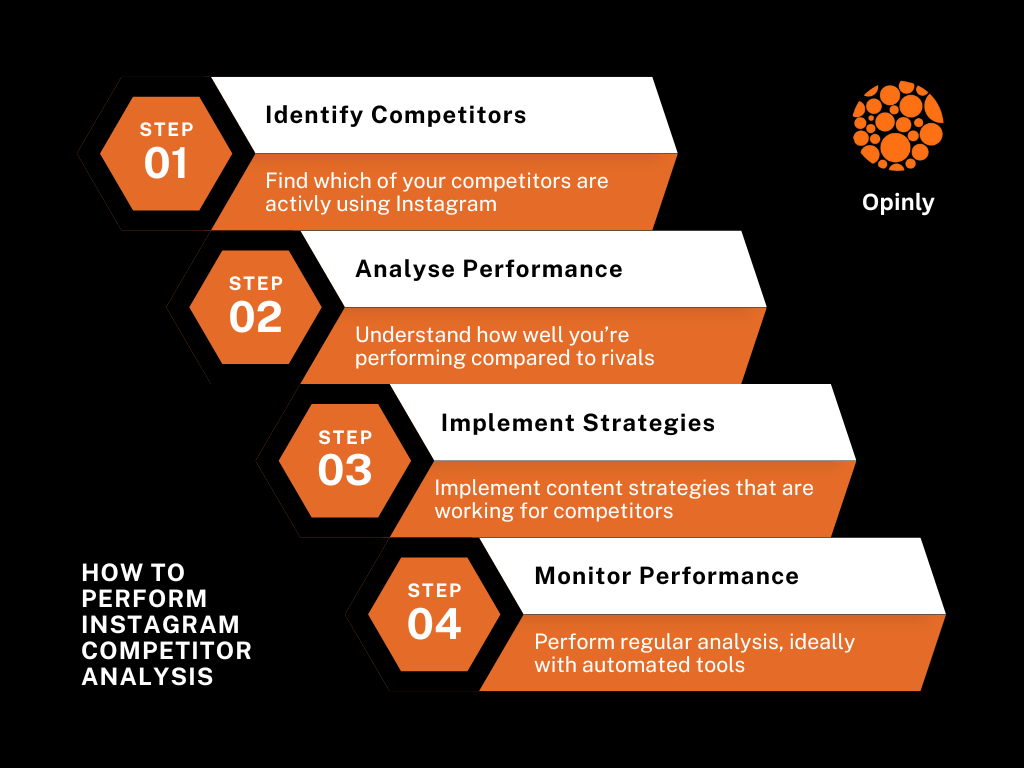How to Implement Target Return Pricing in Your Business
Learn how to implement target return pricing in your business. Discover strategies, best practices, and step-by-step guidance to maximize profitability.

How Well Does Your Business Understand Target Return Pricing?
Target return pricing isn't just a buzzword—it's a strategic approach that could redefine your pricing model and drive your business towards its financial goals.
This method focuses on setting prices based not just on costs or market rates, but on achieving a specific return on investment. Whether you're launching a new product or optimizing an existing lineup, understanding target return pricing is crucial for making informed, profitable decisions.
Join us as we delve into the nuances of this pricing strategy, from its integration with market penetration tactics to its impact on your bottom line.
What is Target Return Pricing?
Target return pricing is a straightforward yet strategic method companies use to determine the price of their products or services. At its core, this pricing strategy aims to set prices that will achieve a specific profit target or return on investment (ROI). This means before setting a price, a company decides the profit it wants to make from a product and then works backwards to find the right price.
Why is Target Return Pricing Important in Business Strategy?

Understanding and using target return pricing is important for several reasons. First, it helps ensure your pricing matches your financial goals, making sure each product sold meets your profit targets. This method is particularly useful when launching new products or entering new markets, as it gives a clear financial goal to aim for.
Target return pricing also helps balance competitiveness and profitability. It allows businesses to price their products competitively while still meeting their financial goals. This balance is crucial for long-term growth and sustainability, making target return pricing an important part of pricing strategies.
By focusing on target returns, companies can make better decisions about costs, marketing, and production. This ensures that all parts of product management are aligned with financial goals. This comprehensive approach not only boosts profitability but also supports strategic planning and resource allocation.
Understanding the Basics of Target Return Pricing

a. Break-Even Analysis
Break-even analysis is a fundamental tool that helps businesses figure out the minimum amount of sales they need to cover all their costs, ensuring they don't lose money. Essentially, it calculates the point at which revenue received from selling a product or service equals the cost of producing it.
Break-even analysis is important because it shows you how many items you need to sell before you start making a profit. Understanding this can help a business set realistic sales targets and avoid financial pitfalls.
b. Cost-Plus Pricing
Cost-plus pricing is a straightforward pricing strategy where a company adds a fixed percentage markup to the cost of producing a product to determine its selling price. This method is closely related to target return pricing because both strategies begin with the cost of production.
However, while cost-plus pricing focuses on covering costs and adding a consistent profit margin, target return pricing aims for a specific return on investment. This means target return pricing might adjust the markup based on factors like market demand or competition to hit the desired financial targets.
c. Margin Requirement
Margin requirement refers to the percentage of profit a company aims to achieve over the cost of a product. In target return pricing, margins are set with specific financial goals in mind. For example, if a company wants a 20% return on each product sold, the pricing must be set high enough to achieve this after covering all costs.
The margin requirement is calculated by considering both the cost of the product and the desired profit, ensuring that the final price aligns with the company's overall financial objectives.
By carefully determining and adhering to these margin requirements, businesses can effectively use target return pricing to guide their pricing strategies and ensure that each sale contributes appropriately to their profit goals.
Strategic Considerations in Target Return Pricing

a. Pricing Strategy
When it comes to pricing strategy, aligning it with your overall business goals is key, and that's where target return pricing plays an important role. A pricing strategy ensures that the price of your products or services is set not only to cover costs but also to meet specific financial targets, such as a desired profit margin or return on investment.
By integrating target return pricing into the broader business strategy, companies can make sure that every product sold contributes effectively to their overall financial health and long-term objectives.
A pricing strategy helps in making informed decisions about product development, marketing efforts, and resource allocation, all geared towards achieving the set financial goals.
b. Market Penetration Pricing
Market penetration pricing is a strategy used when entering a new market, where products are initially offered at lower prices to attract customers and gain market share quickly.
This contrasts with target return pricing, which focuses more on achieving specific financial outcomes rather than quickly capturing a large customer base.
While market penetration pricing is useful for establishing a presence in a competitive market, it may not always meet the immediate financial targets as set by target return pricing.
Over time, businesses might adjust prices upwards once they have secured a foothold in the market, shifting towards target return pricing to ensure profitability in the long run.
c. Value-Based Pricing
Value-based pricing is another important strategy where the price is set based on the perceived value of the product or service to the customer rather than just the cost of production.
This perception of value can significantly influence the effectiveness of target return pricing. If customers perceive a high value in a product, a company can set higher prices, leading to greater returns per sale.
Conversely, if the perceived value is low, the pricing must be adjusted accordingly to still meet the target returns. Therefore, understanding and influencing customer value perception is important for businesses using target return pricing, as it directly impacts how well they can achieve their desired financial outcomes. This approach ensures that pricing strategies are not only about covering costs or achieving returns but also about aligning with what customers are willing and able to pay.
Market Dynamics of Target Return Pricing

a. Price Elasticity of Demand
Price elasticity of demand measures how sensitive consumers are to price changes. If a product has high elasticity, a small price change can cause a big change in the quantity demanded. On the other hand, if a product has low elasticity, price changes have little effect on demand.
Understanding this price monitoring concept is important for businesses because it helps them decide how much they can change prices without losing customers. For example, in target return pricing, if a product is highly elastic, raising the price to meet financial goals might lead to a big drop in sales, which would defeat the purpose of the pricing strategy.
b. Competitive Pricing
In markets with many businesses offering similar products or services, competitive pricing is very important. This means setting prices similar to or slightly lower than competitors to attract more customers.
When using target return pricing in these markets, companies need to be flexible with their prices. They should keep an eye on competitors’ prices and market trends to make sure their prices stay appealing to customers while still aiming for their profit targets. Adjusting prices based on competition helps a business stay relevant and competitive without giving up on its financial goals.
c. Market Segmentation
Market segmentation means dividing a market into different groups of buyers who need separate products or marketing approaches. By understanding the needs and purchasing power of each group, businesses can create more effective pricing strategies. This is especially useful with target return pricing, as it allows companies to set different prices for each group based on their characteristics and willingness to pay.
For example, a premium segment may be less concerned about price and more about value, so a company can set higher prices and achieve better returns. On the other hand, price-sensitive segments may need lower prices to increase sales volume, aiming for goals like market penetration. By tailoring pricing to each segment, businesses can maximize returns while meeting the specific needs of each group.
Financial Implications in Target Return Pricing

a. ROI (Return on Investment)
Return on Investment, or ROI, measures how well an investment, like a product or marketing campaign, is performing. It shows the profit made from an investment as a percentage of its cost.
In target return pricing, ROI helps businesses check if their pricing strategy is successful in generating the desired return. For example, if a company aims for a 20% return on the costs of making and marketing a product, they can use ROI to see if they're hitting that target.
If the ROI is higher than expected, it means the pricing strategy is working well. If it's lower, it suggests that changes might be needed, either in the pricing or in managing costs.
b. Pricing Objectives
In business, competitor pricing objectives are the goals that determine how a company sets its prices. These goals can include increasing market share, maximizing sales, improving profit margins, or a mix of these.
Different objectives need different pricing strategies. For example, to increase market share, a company might set lower prices to attract more customers, even if profits are lower initially. To maximize profit margins, they might set higher prices to ensure more profit per sale, even if fewer units are sold.
Balancing these objectives is key in target return pricing. The strategy should be flexible to adjust prices based on market conditions, competitor actions, and cost changes, all while aiming to meet the various pricing goals.
Managing these objectives often involves trade-offs, such as sacrificing some market share for higher profit margins or accepting lower margins temporarily to build customer loyalty and boost sales. Understanding these trade-offs and aligning them with long-term business plans is important for maintaining profitability and growth.
Advanced Concepts of Target Return Pricing

a. Demand Curve Analysis
Demand curve analysis is a useful tool in economics that helps businesses see how the amount of their product sold changes at different prices. The demand curve usually slopes downward, meaning that lower prices lead to higher demand, while higher prices result in lower demand.
By studying this curve, companies can find the best price points to maximize revenue or achieve financial targets like target return pricing. This analysis helps businesses predict how price changes might affect sales and allows them to adjust prices to meet their financial goals.
For example, if the analysis shows that a small price decrease could greatly increase sales without cutting too much into profit margins, a company might lower prices to boost revenue and market share.
b. Pricing Tactics and Innovations
In pricing, continuous innovation and smart strategies are essential to stay competitive and meet financial goals. As markets and consumer behaviors change, businesses must adjust their pricing strategies to remain relevant.
This could involve dynamic pricing, where prices change in real-time based on demand, competition, and other factors. Another approach is psychological pricing, such as setting a price at $9.99 instead of $10 to make it more appealing to consumers.
In the future, we might see more advanced pricing methods like personalized pricing, where algorithms analyze a customer's buying habits and willingness to pay, allowing businesses to offer prices tailored to each customer.
Subscription models and loyalty pricing are also becoming popular, offering customers lower ongoing prices in exchange for long-term commitment. These innovations help achieve target returns, build customer loyalty, and adapt to changing market conditions.
Conclusion
Understanding and effectively implementing target return pricing is crucial for businesses aiming to meet specific financial goals through their pricing strategies. This approach not only helps ensure profitability but also aligns product pricing with broader business objectives such as market share growth and customer satisfaction.
By analyzing factors like demand curves and adapting to market dynamics through innovative pricing tactics, companies can optimize their prices to maximize returns while remaining competitive.
Frequently Asked Questions
1. What is a target price pricing strategy?
A target price pricing strategy is a method where businesses set the selling price of their products or services based on a specific profit goal they want to achieve. This strategy considers the cost of production and adds a markup that ensures the company will meet its desired profit margin. It's like setting a financial target for each sale and figuring out what price will get you there.
2. What is break even target return pricing?
Break-even target return pricing is a specific approach where the price is set so that the revenue from sales exactly covers all the costs involved in production and marketing, plus a desired profit margin. Essentially, it calculates the minimum price at which a product must be sold to not only cover all expenses but also achieve a predefined profit target. This method is useful for making sure that a business does not lose money on its sales and achieves a minimum profit.
3. What is the target return rate?
The target return rate is the specific profit percentage or rate of return that a business aims to achieve on each product sold or on the overall investment. For example, if a company sets a target return rate of 20%, it means they want to earn a profit that is 20% of the cost of producing and selling the product. This rate helps businesses set their prices and gauge the success of their pricing strategies.
4. What is target return pricing in marketing?
In marketing, target return pricing refers to setting product prices based on the profit goals of the marketing campaign. This strategy is used to ensure that the marketing efforts are not only covering the costs but are also contributing to the financial goals of the company. It aligns the pricing strategy with the overall marketing objectives, helping to maximize profitability from promotional activities.
5. What is target return pricing formula?
The target return pricing formula is used to calculate the price of a product by adding a desired profit to the cost of the product. The formula can be expressed as:
Price=Cost+(Target Return Rate×Cost)
This means you first calculate how much the product costs to make, then multiply this cost by your target return rate to find out how much profit you want. Add this profit to the original cost to get the final selling price. This formula helps ensure that every sale meets a set financial target, making it a key tool in strategic pricing.




